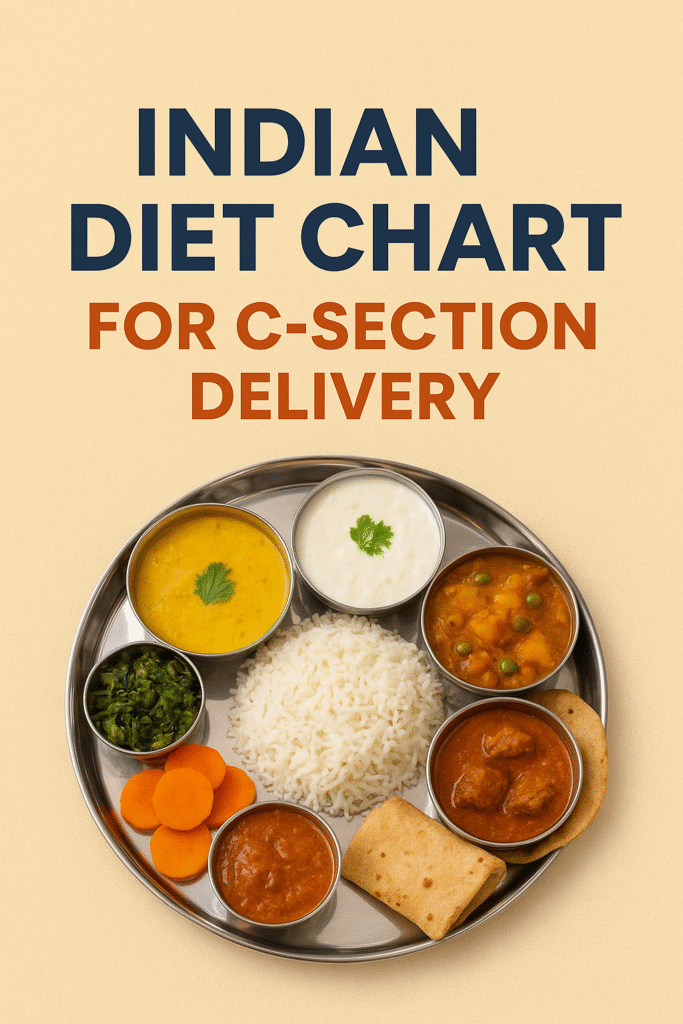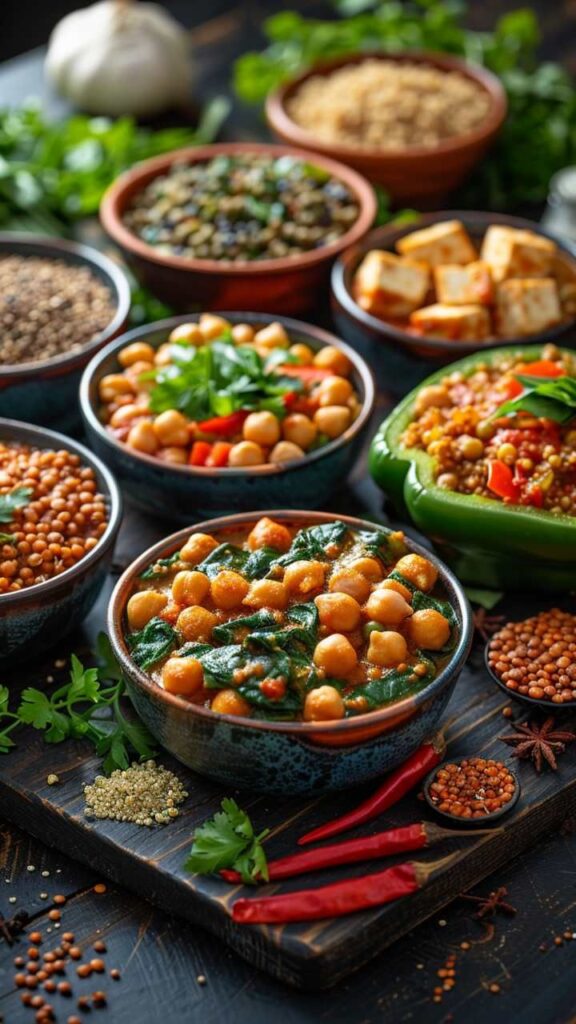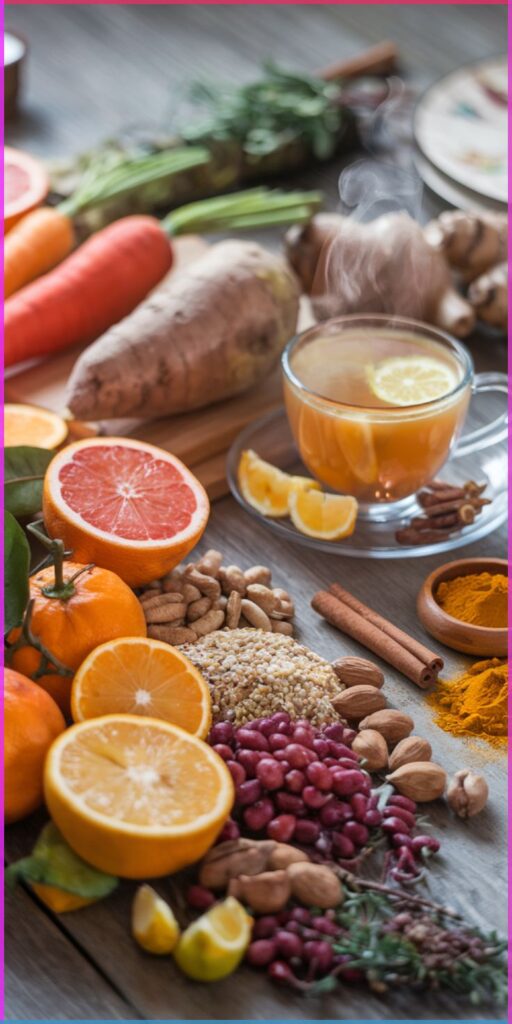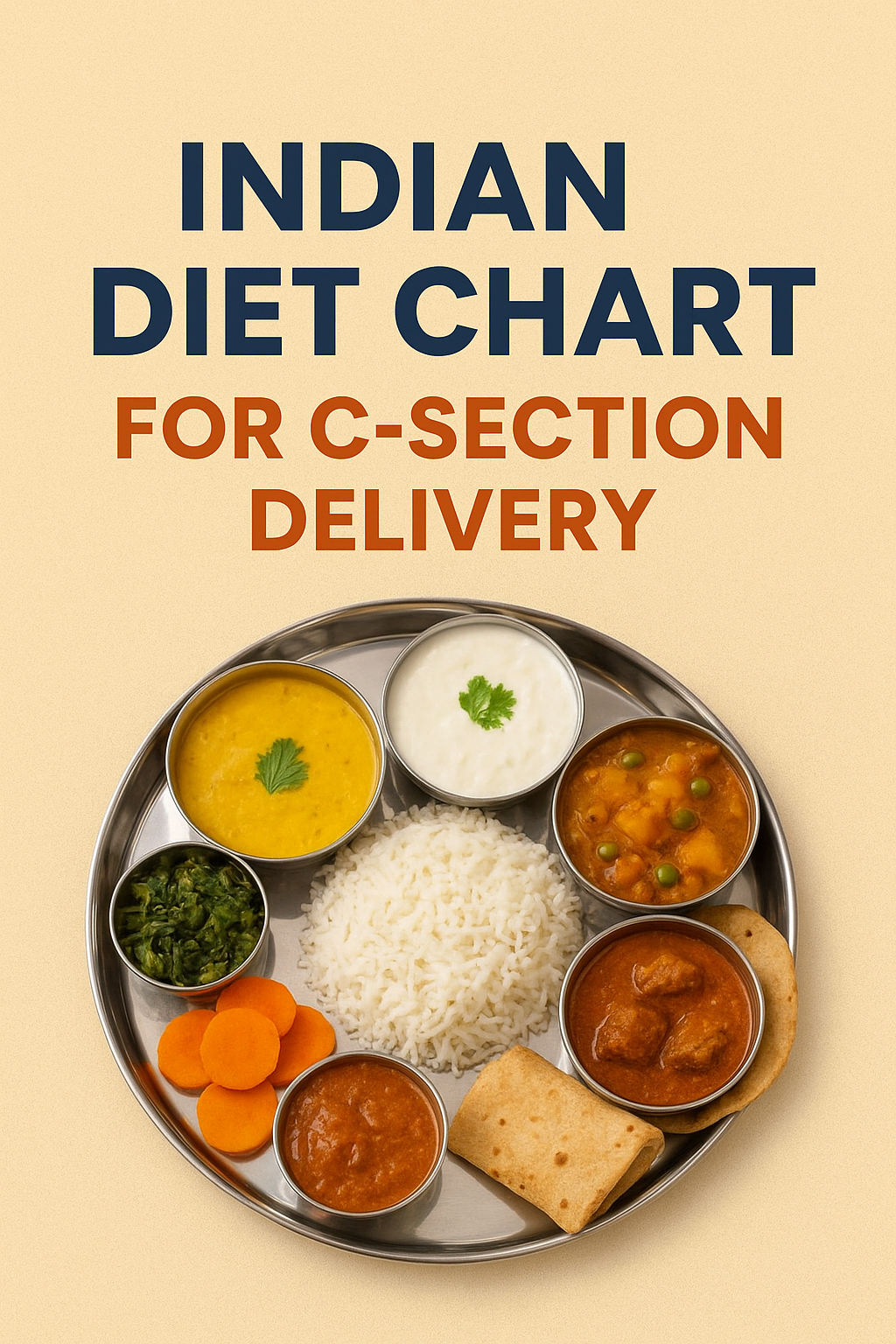Recovering from a C-section delivery is both a beautiful and challenging journey. Your body has just gone through major abdominal surgery, and the right nutrition plays a key role in healing, boosting energy, and supporting breastfeeding. A well-balanced Indian diet chart for C-section delivery ensures faster recovery, reduces post-surgery discomfort, and provides strength to both mother and baby.

Why an Indian Diet Chart is Important After C-Section
After a cesarean, the body requires extra care and nutrients to:
- Heal surgical wounds and tissues
- Replenish lost blood
- Strengthen immunity
- Prevent constipation and digestive issues
- Support healthy breast milk production
An Indian diet chart for C-section delivery combines traditional healing foods with modern nutritional wisdom, making it gentle on the stomach yet rich in proteins, vitamins, and minerals.

1. Protein Power: The Building Blocks of Healing
Protein is essential for tissue repair and wound healing after surgery. Some easy-to-digest Indian protein sources include:
- Dal (lentils): Moong, masoor, or toor dal are light, nutritious, and protein-rich.
- Paneer & Yogurt: Provide calcium and protein while improving digestion.
- Eggs & Lean Chicken: For non-vegetarians, boiled eggs or light chicken curry are great choices.
- Golden Milk: Warm turmeric milk at night reduces inflammation and aids recovery.
2. Hydration & Fiber: Preventing Constipation

Due to reduced mobility and post-surgery medicines, constipation is common after C-section. To prevent this:
- Start your day with warm water and soaked almonds.
- Include soft-cooked vegetables like spinach, bottle gourd, and carrots.
- Eat fresh fruits such as papaya, guava, and oranges for natural fiber and vitamin C.
- Stay hydrated with coconut water, buttermilk, and herbal teas.
3. Energy-Boosting Carbohydrates & Healthy Fats
Postpartum recovery demands energy, and the right carbs and fats can help:
- Whole grains: Brown rice, multigrain chapatis, oats, and millets like ragi or bajra.
- Healthy fats: A small amount of ghee aids digestion, boosts immunity, and provides strength.
- Nuts & Seeds: Walnuts, flaxseeds, and sesame seeds offer omega-3 fatty acids that reduce inflammation.
4. Immunity-Boosting Foods for Faster Recovery

After a C-section, your immune system is slightly weakened due to surgery and blood loss. Including immunity-boosting foods in your Indian diet chart for C-section delivery can protect you from infections and speed up healing:
- Haldi (Turmeric): Known for its anti-inflammatory and antiseptic properties, turmeric can be added to curries or warm milk.
- Garlic: Helps fight infections and supports lactation.
- Tulsi (Holy Basil) & Ginger: Tulsi tea or ginger water boosts immunity and improves digestion.
- Seasonal Fruits: Citrus fruits like oranges, sweet lime, and amla are rich in vitamin C for wound healing.
- Dry Fruits: Almonds, dates, and raisins provide iron and antioxidants that strengthen immunity.
Bonus Tips: Foods to Avoid & Meal Timing
- Avoid spicy, fried, and oily foods as they can slow healing and upset digestion.
- Limit caffeine and sugary drinks.
- Eat small, frequent meals instead of heavy portions.
- Get plenty of rest and listen to your body’s hunger cues.
Why Following an Indian Diet Chart for C-Section Delivery is Vital
Unlike vaginal birth, a C-section involves surgery, which means your body needs more time and nutrients to heal. A carefully planned Indian diet chart for C-section delivery helps in:
- Faster wound healing (with proteins like dal, paneer, and eggs)
- Reducing pain and inflammation (thanks to turmeric and ghee)
- Preventing constipation and dehydration (through coconut water, fruits, and fiber-rich foods)
- Supporting breastfeeding with energy-rich whole grains and nuts
This diet not only speeds up physical recovery but also stabilizes energy levels, reduces fatigue, and improves mental well-being.
FAQs on Indian Diet Chart for C-Section Delivery
Q1: When can I start eating solid foods after a C-section?
Usually, within 24–48 hours, depending on your doctor’s advice. Start with light meals like khichdi, dal, and steamed vegetables.
Q2: Which Indian foods should I avoid after a C-section?
Stay away from heavy, spicy, fried foods, as well as processed snacks, caffeine, and sugary drinks.
Q3: How important is hydration after C-section?
Very important! Fluids help prevent constipation, flush out toxins, and improve milk supply. Drink at least 8–10 glasses daily.
Q4: Can I follow this diet while breastfeeding?
Yes! This diet is designed to support both recovery and breastfeeding.
Q5: Should I take supplements in addition to this diet?
Only if prescribed by your doctor. A nutrient-rich diet should be your foundation.
For further expert-backed guidance on recovery and nutrition, you can explore these helpful resources: Apollo 24|7’s detailed Indian diet chart for post-C-section recovery, which explains week-by-week food recommendations; Medanta Hospital’s postnatal recovery tips, covering rest, pain management, and gentle exercise; Pampers India’s practical diet guide, offering sample meal plans and foods to avoid; Lybrate’s article on early postpartum diet care, focusing on foods to ease digestion; and the Times of India health section, which shares expert advice on safe recovery practices.
CLICK HERE to download free diet paln




Leave a Reply